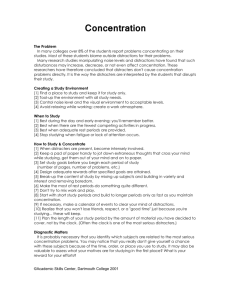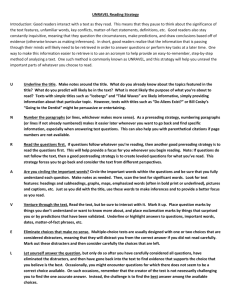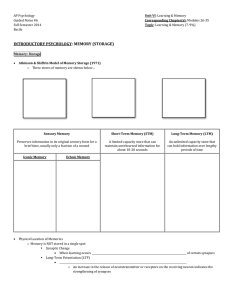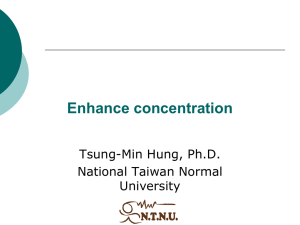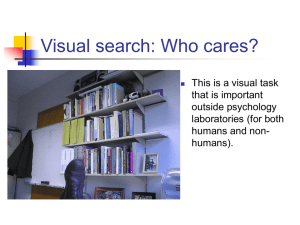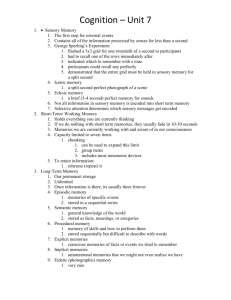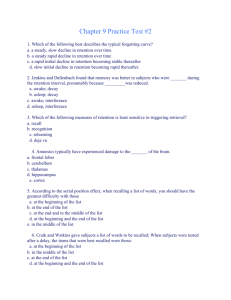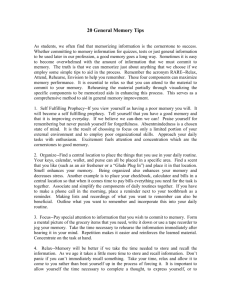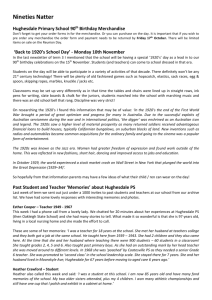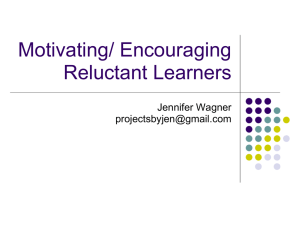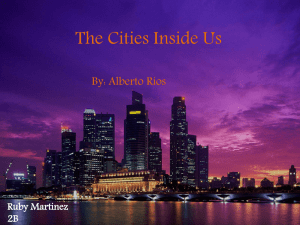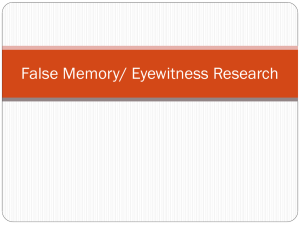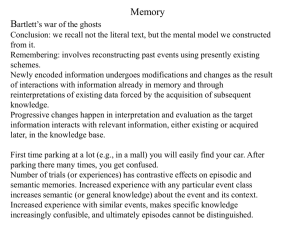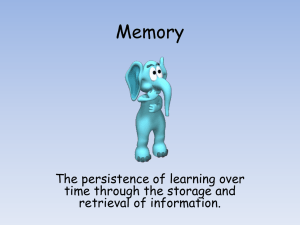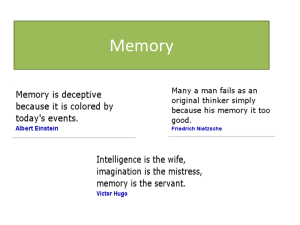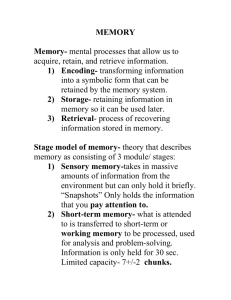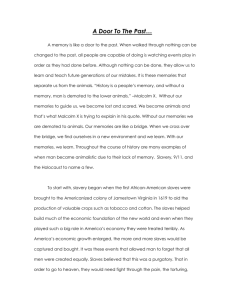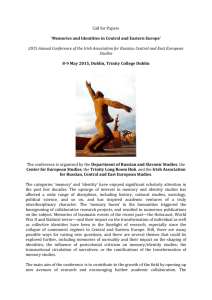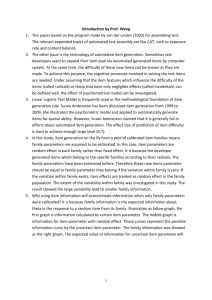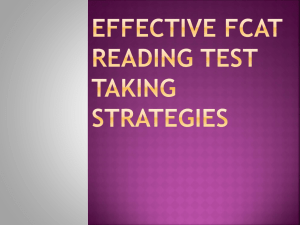False Memory in Images and Words - John H. Krantz
advertisement
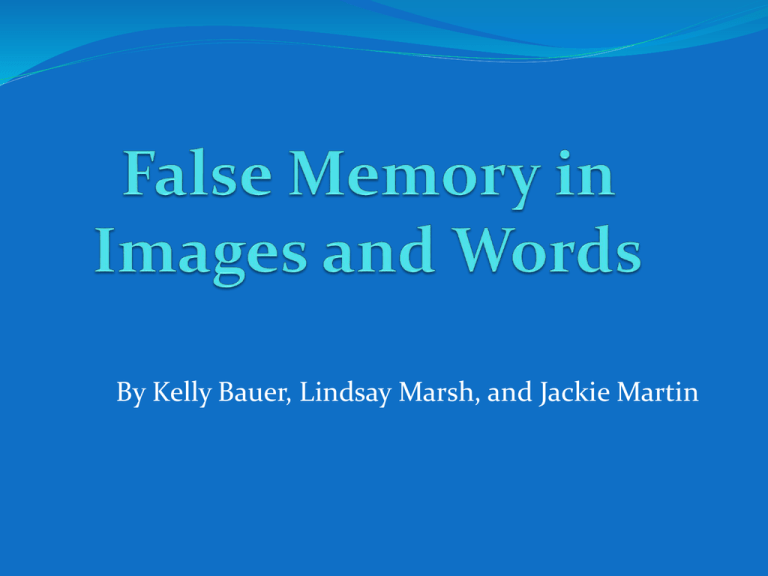
By Kelly Bauer, Lindsay Marsh, and Jackie Martin What are false memories? False memories occur when a person believes they saw something that was never presented to them. Types of distracters- normal versus special Schemas contribute to false memories Prototype study with images of faces(Solso and McCarthy, 1981) Hypothesis We expected participants would have more false memories when recalling words than when recalling images. Participants will select more special distracters in the word condition than the image condition. Method Participants 20 participants from Hanover College 12 Females and 8 Males Ethnicity 19 Caucasians 1 African American Age Range 19-22 Method Equipment and Stimuli Gateway computers in the Psychology laboratory False Memory program written in Java (Krantz, 2010) 11 Images and words in each of 6 trials Special distracter and normal distracters in each set Method Procedure Informed Consent Demographic Questionnaire We alternated the order that they completed the conditions Debriefed and dismissed Results We ran 2 x 3 ANOVA with repeated measures Main effect for stimulus type, p < .05 Main effect for distracters (normal and special)versus items in the sequence, p < .001 Significant interaction, p < .001 Post Hoc t-test with Bonferroni Correction Results 1 0.9 Mean Recognition 0.8 0.7 0.6 0.5 Images Words 0.4 0.3 0.2 0.1 0 -0.1 On List Normal Distractors Special Distractors Discussion We expected that participants would have more false memories with words than images. Our hypothesis was supported Schemas developed for both words and images– fell for special distracters in both Images -less special distracters in recall because visual cues help memory Future Directions Limitations Some participants complained about the small size of the images in the recall stage. With images, we only studied objects, not other forms of images. Future study Make images larger in recall portion Study other images, such as faces, to see the difference in false memories Questions?
